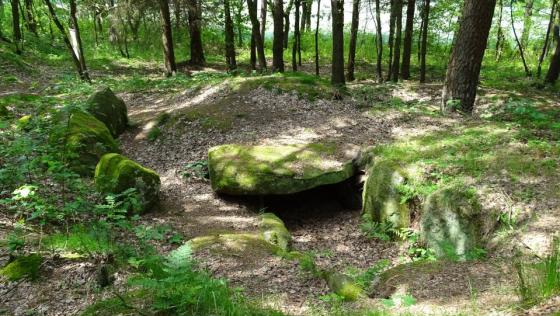taken from the information board of station 4:
Megalithic tombs in long barrow A
During the cultural-historical period, called the Neolithic period (about 4000 to 2000 BC), there was a period of two different burial customs: tombs, which are very similar to today’s coffin burials, and closed burial chambers. In this area large boulders were available as building material, which were still lying around in large numbers on the ground surface 5000 years ago. They come, as all the soil in northern Germany, from Scandinavia and were during the penultimate Ice Age (about 250,000 to 130,000
years) transported here. The people who built megalithic tombs introduced agriculture to our area. They were the first with a sedentary lifestyle. Also they produced a considerable number of ceramic vessels. After a characteristic pot shape they produced, we call them funnel beaker people.
Usally, only a stone chamber is under an elongated hill (long bed) or in a round hill. In this long bed are two chambers. From the archive of the Daudieck estate we know that by 1780 more than 100 kerbstones of the ??the mound enclosure were present. In addition to the few support stone of the chamber only eleven of them have survived. The width of the chambers depends on the largest available boulders, which could be moved as capstones. The length is not subject to such constraints, because in each case a capstone on two opposite support stones – forming a so-called yoke – could be placed in any number together. In fact, the number of yokes used is determined by the offer of stone and the local building tradition. In the Weser-Ems area for example, up to 13 yoke long tombs were built.






















